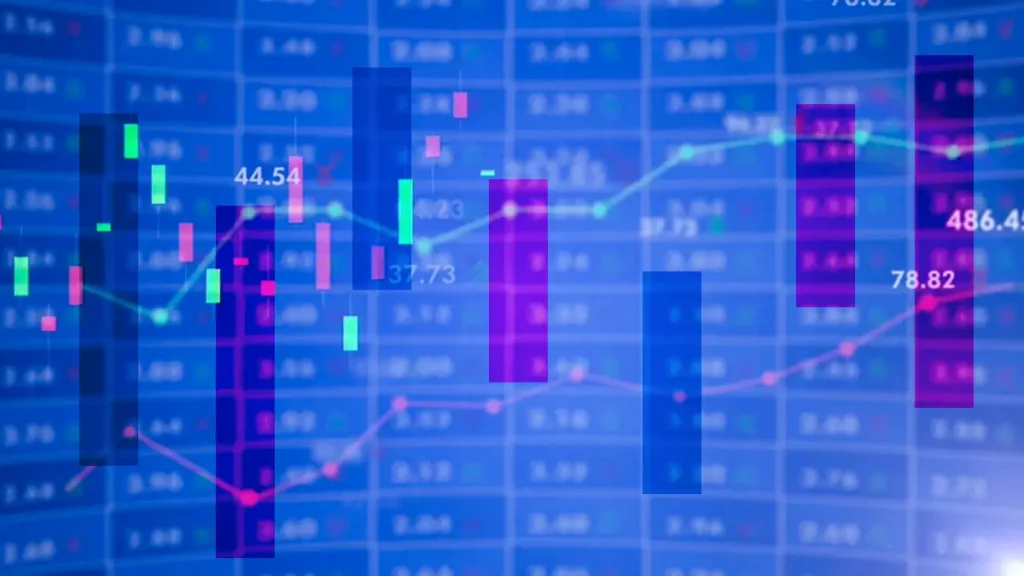After a big stock rally, stocks faced difficulties when bond yields increased. Traders believed the Federal Reserve would resist the recent ease in financial conditions. They thought the Fed would stay flexible with its policy decisions.
Following its strong performance in the Stock rally last week, the S&P 500 continued to rise on Monday. However, a shift in the bond market had a negative impact on market sentiment, as 10-year yields increased by eight basis points to 4.65%.
This happened due to significant corporate debt sales and in anticipation of the upcoming auctions starting on Tuesday.
The Senior Loan Officer Opinion Survey, known as SLOOS, also drove Wall Street’s attention. It revealed that US banks were maintaining stricter lending standards, and there was weaker demand for loans.
Moreover, several key events and reports are scheduled in the coming days.
In the financial markets, swaps indicate expectations of more than 100 basis points in rate cuts by the end of 2024, compared to the previously expected peak rate of 5.37%.
Investors and Market Experts react —Questions and anticipations about the stock rally
David Donabedian, the chief investment officer of CIBC Private Wealth US, suggested that a dose of reality could be on the way for the Federal Reserve.
He anticipates that the remainder of the year may experience significant fluctuations, with mood swings influenced by the direction of interest rates.
Andrew Brenner, head of international fixed-income at NatAlliance Securities, expressed his strong opinion.
Brenner stated, “The Fed is done, done, done.”
He believes a rate cut in June is certain, and the market is already anticipating four rate cuts in the next year.
However, he expects the Fed to resist this expectation, at the very least to keep its options open. Chairman Powell is likely to make efforts to reverse some of the recent financial easing.
Chris Larkin at E*Trade is wondering if the stock rally can endure. This largely depends on whether the upcoming economic data aligns with the recent jobs report, which indicated a slowdown in the labor market for October.
Larkin pointed out that if this cooling trend continues, those optimistic about the market might believe that the Federal Reserve will adopt a less aggressive stance.
Nonetheless, it’s worth noting that the market tends to experience short-term pullbacks, especially after a significant stock rally like the one observed last week.
The S&P 500 is currently at 4,365.98, and analysts are keeping an eye on the 4,355 level. This marks a 50% retracement from the decline from its July highs to October lows.
If it remains above this level, the next key number to watch would be 4,400, where the index was during its mid-October highs, as highlighted by Keith Lerner, co-chief investment officer at Truist Advisory Services.
According to Keith Lerner, the S&P 500 needs to surpass the 4,400 level to reverse its downward trend.
On the other hand, Morgan Stanley’s Michael Wilson views the S&P 500’s best week in a year as merely a bear-market stock rally.
He cites a pessimistic earnings outlook, weaker macroeconomic data, and worsening analyst opinions, which make it challenging for him to anticipate a year-end stock rally.
Marko Kolanovic from JPMorgan Chase & Co. suggests that equities will lose their appeal to investors once again.
That’s with the possibility of prolonged high interest rates and slower economic growth taking center stage.
While falling bond yields and accommodative central bank meetings initially boosted equities, the trade-off between growth and policy will continue to pose challenges as we head toward the year-end.
JC O’Hara, the chief market technician at ROTH MKM, poses a crucial question: Was the decline in October just a “bear trap”? If it was, we could anticipate a rapid upturn. However, if it wasn’t, it might be wise to reduce exposure at the current levels.
According to Lori Calvasina at RBC Capital Markets, the primary concern among equity investors her firm recently communicated with was whether 10-year Treasury yields had reached their highest point.
Calvasina mentioned their perspective in the past month was that if the rise in yields halted promptly, it might spare US equities from further harm.
Additionally, this November and the stock rally historically proved favorable for the S&P 500. While December is usually a positive month, it’s worth noting that there have been challenging December periods in recent years, similar to that seen in October.
Jean Boivin from BlackRock Inc. suggests that any year-end stock rally may be short-lived due to equities not fully factoring in the expectation of prolonged higher interest rates.
10- Year treasury yields fall as short positions rise despite bond rally
Yields on 10-year Treasuries have declined since their peak of 5.02% on October 23 as bond market traders revised their rate hike expectations. Several factors, including more manageable US refunding needs, disappointing job data, and indications of a less hawkish Federal Reserve stance, may have led to the closing of short positions.
Interestingly, leveraged funds increased their net short positions in Treasury futures to the highest levels on record as of October 31, despite a bond rally the previous week.
Read More: Stocks and Bonds Ease as Traders Pause After the November Rally
